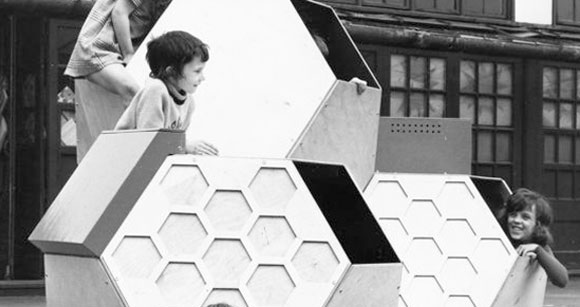
Moveable Playground Structure by Victor Papanek. Image courtesy Victor J Papanek Foundation
The 3rd issue of Disegno magazine features my story on the Victor J Papanel Foundation and its making, and tries to shed some new light on this controversial figure that has become the symbol of an entire movement in the early 2000s. I was privileged to have interviewed both Thomas Geisler and Martina Fineder, who were responsible for tracking and putting together the Papanek Archive in Vienna. The full piece is available online over at Disegno Daily, and an excerpt can be read after the jump.
Meanwhile, Geisler and Fineder are no longer working with the archive, but their years of research on Papanek keep finding new outlets for expression – especially at a moment when 1960s and 70s utopias seem to be consistently revived by both designers and architects. Fineder is completing her PhD, which focuses on critical design practices in East Germany in the 1970s. Next year, at Vienna’s MAK, Geisler curates Nomadic Furniture, a show titled after one of Papanek’s books, which seeks to shed new light onto the designer’s furniture production, informing it historically and geographically.
“Obviously there are some parallels with political, sociological changes between the 1970s and today, but the 1970s are not the starting point,†says Geisler. “We must connect Papanek with what Rietveld did in the 1920s, do-it-yourself furniture, Autoprogettazione in Italy, there are quite a few prominent protagonists.†Geisler argues that the possibility to distribute open-source design is something Papanek would have dreamt of. “Papanek has always been framed in a very specific direction,†he says. “And if you read through Design For The Real World, there is just so much more. It’s not just about the third world. It’s really very much about our world. Looking through projects for developing countries actually teaches us to look at ourselves, and our environment, and how we create our surroundings.â€
Geisler would like to see the Papanek archive serving as a resource for these and other enquiries, which would add to the debate on Papanek and would continue to inform researchers and the general public about the personality and character of the designer. As a kick-off, Geisler and Fineder will compile all of their writings on a website, distributing them for free and opening the doors to all the world, in true Papanek spirit.